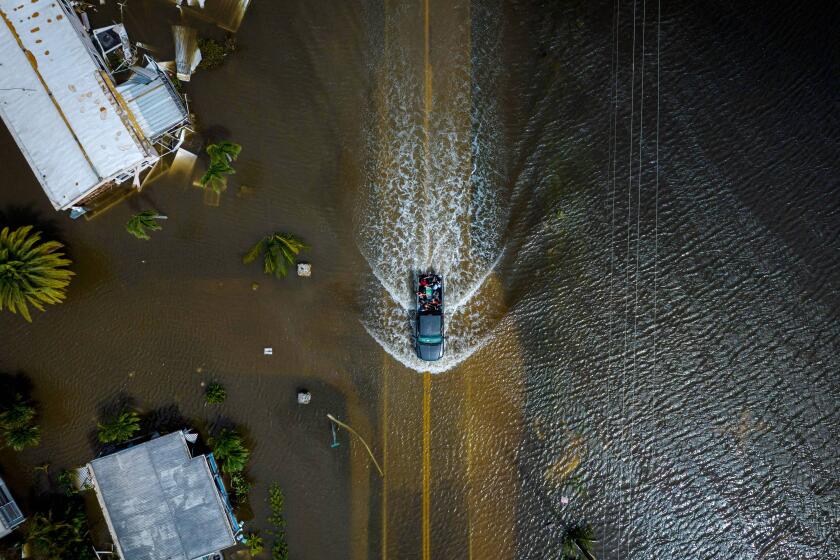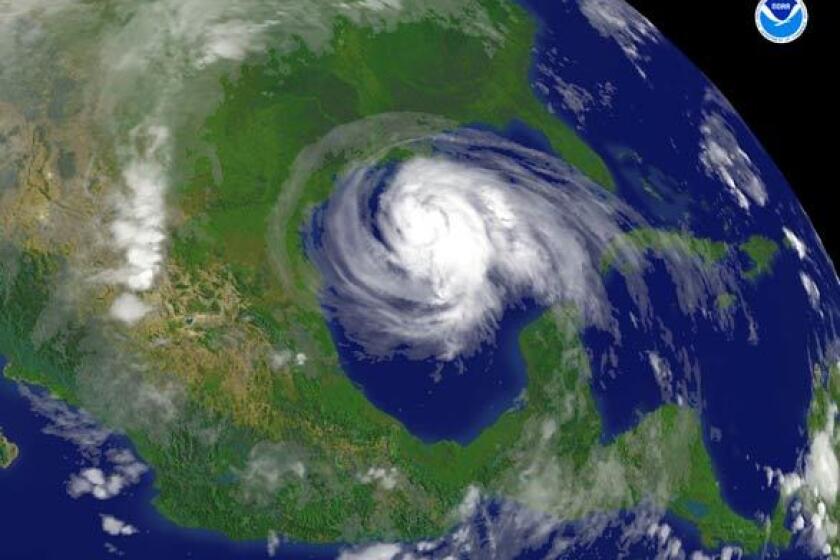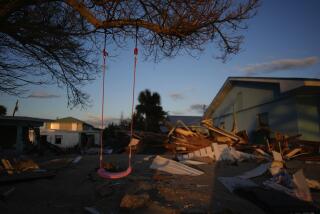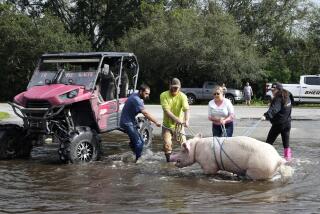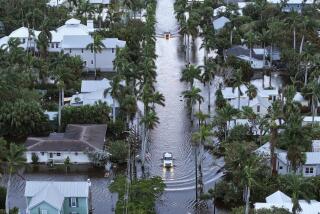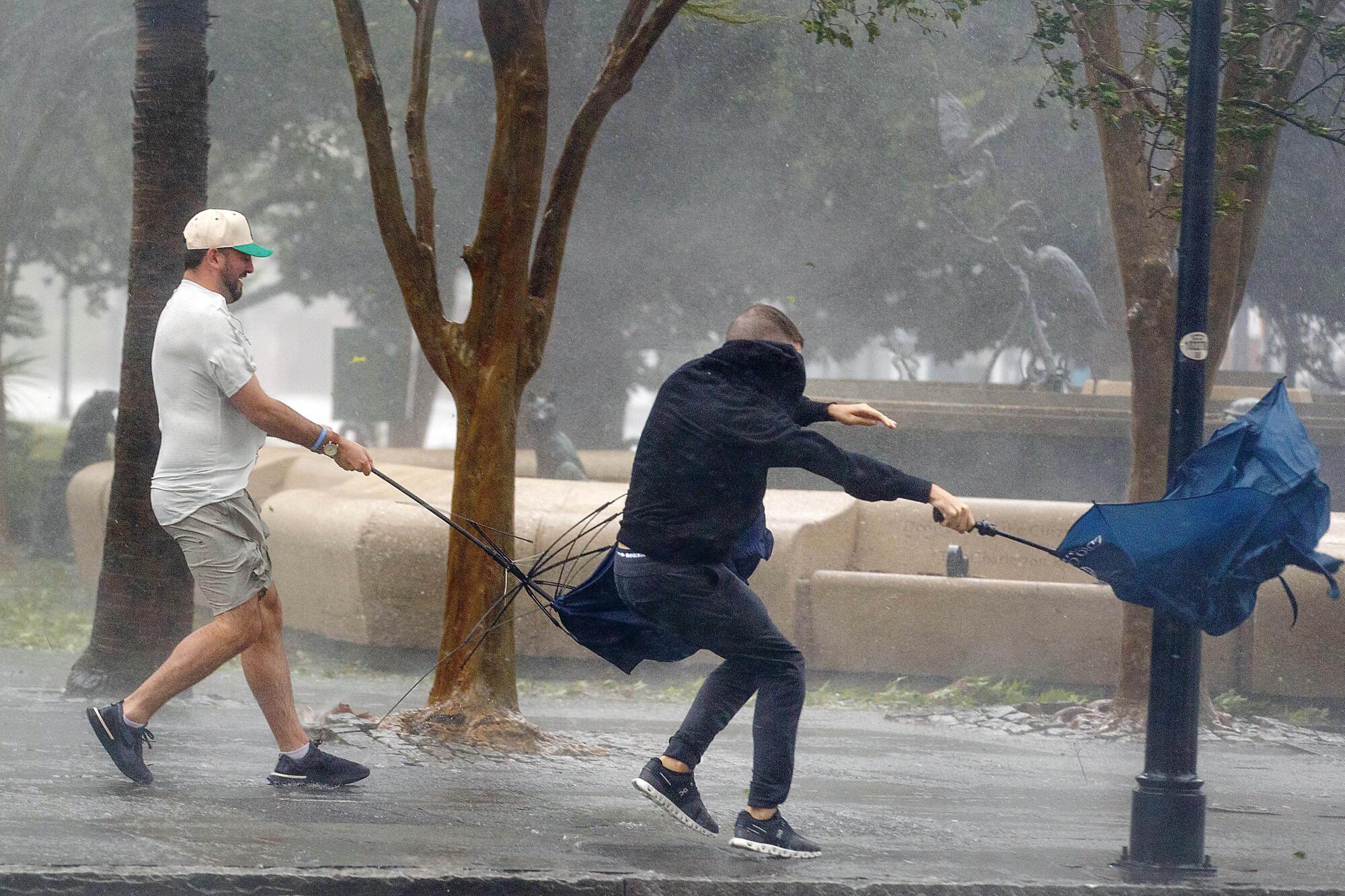
- Share via
CHARLESTON, S.C. — A revived Hurricane Ian pounded coastal South Carolina on Friday, ripping apart piers and flooding streets after the ferocious storm caused catastrophic damage in Florida, trapping thousands in their homes and leaving at least 17 people dead.
The powerful storm, estimated to be one of the costliest hurricanes ever to hit the U.S., has terrorized people for much of the week — pummeling western Cuba and raking across Florida before gathering strength in the warm waters of the Atlantic Ocean to curve back and strike South Carolina.
While Ian’s center came ashore near Georgetown, S.C., on Friday with much weaker winds than when it crossed Florida’s Gulf Coast earlier in the week, the storm left many areas of Charleston’s downtown peninsula under water. It also washed away parts of four piers along the coast, including two at Myrtle Beach.
Online cameras showed seawater filling neighborhoods in Garden City to calf level. As Ian moved across South Carolina, it dropped from a hurricane to a post-tropical cyclone.
Ian left a broad swath of destruction in Florida, flooding areas on both of its coasts, tearing homes from their slabs, demolishing beachfront businesses and leaving more than 2 million people without power.
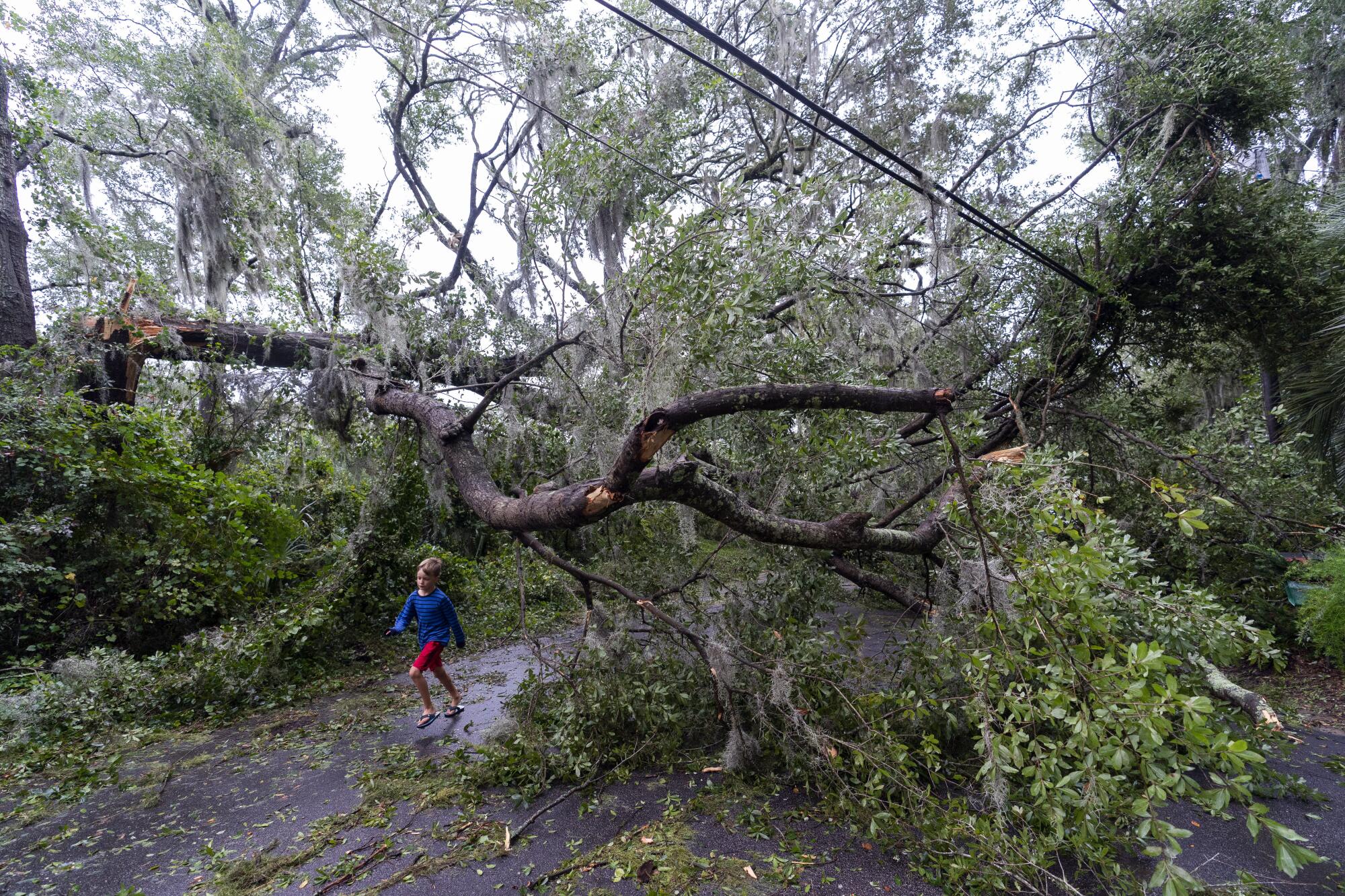
Many of the deaths were drownings, including that of a 68-year-old woman swept into the ocean by a wave. A 67-year-old man who was waiting to be rescued died after falling into rising water inside his home, authorities said.
Other storm-related fatalities included a 22-year-old woman who died after an all-terrain vehicle rollover from a road washout and a 71-year-old man who fell off a roof while putting up rain shutters. An 80-year-old woman and a 94-year-old man who relied on oxygen machines also died after the equipment stopped working during power outages.
Another three people died in Cuba earlier in the week as the storm churned northward. The death toll was expected to increase substantially once emergency officials have an opportunity to search many of the hardest-hit areas.
Rescue crews piloted boats and waded through riverine streets in Florida after the storm to save thousands of people trapped amid flooded homes and buildings shattered by Hurricane Ian.
Florida Gov. Ron DeSantis said Friday that rescue crews had gone door-to-door to more than 3,000 homes in the hardest-hit areas.
“There’s really been a herculean effort,” he said during a news conference in Tallahassee.
Hurricane Ian made landfall in southwest Florida on Wednesday as a catastrophic Category 4 storm.
Hurricane Ian has likely caused “well over $100 billion’’ in damage, including $63 billion in privately insured losses, according to the disaster modeling firm Karen Clark & Co., which regularly issues flash catastrophe estimates. If those numbers are borne out, that would make Ian at least the fourth-costliest hurricane in U.S. history.
Florida Division of Emergency Management Director Kevin Guthrie said responders have focused so far on “hasty” searches, aimed at emergency rescues and initial assessments, which will be followed by two additional waves of searches. Initial responders who come across possible remains are leaving them without confirming, he said Friday, describing as an example the case of a submerged home.
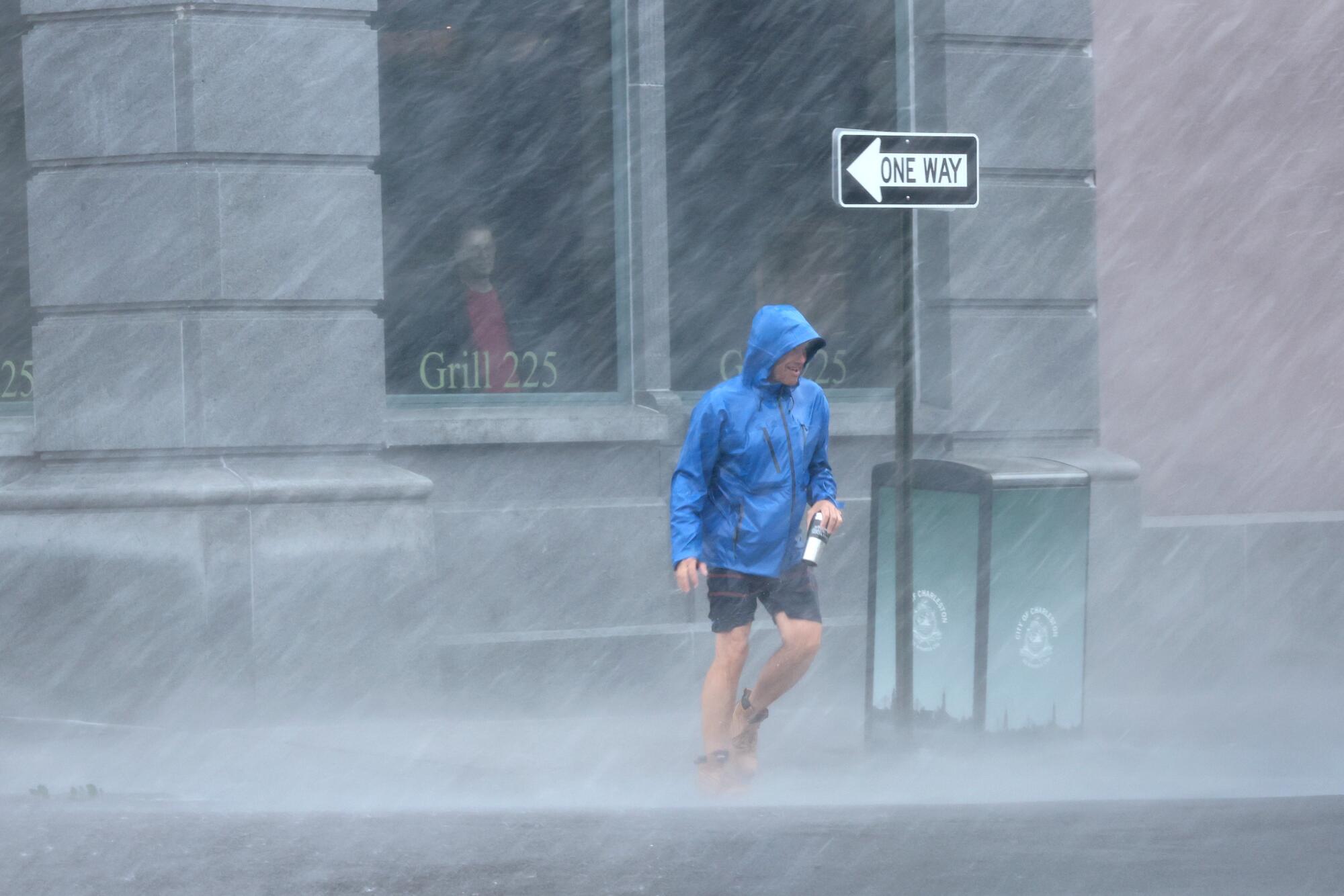
“The water was up over the rooftop, right, but we had a Coast Guard rescue swimmer swim down into it, and he could identify that it appeared to be human remains. We do not know exactly how many,” Guthrie said.
Desperate to locate and rescue their loved ones, social media users shared phone numbers, addresses and photos of their family members and friends for anyone who can check on them.
Orlando residents returned to flooded homes Friday, rolling up their pants to wade through muddy, knee-high water in their streets. Friends of Ramon Rodriguez dropped off ice, bottled water and hot coffee at the entrance to his subdivision, where 10 of the 50 homes were flooded and the road looked like a lake. He had no power or food at his house, and his car was trapped by the water.
“There’s water everywhere,” Rodriguez said. “The situation here is pretty bad.”
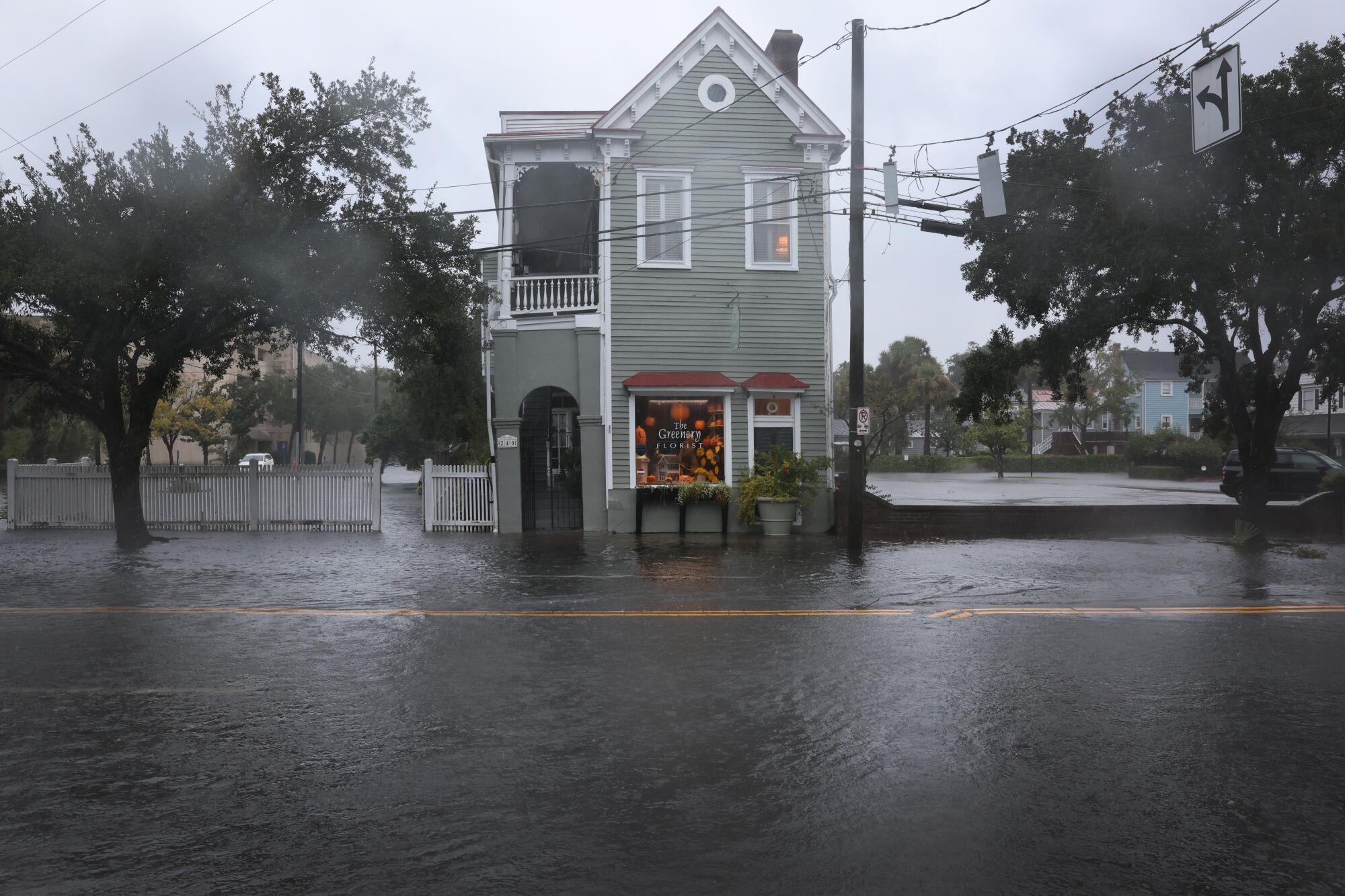
The devastating storm surge destroyed many older homes on Florida’s barrier island of Sanibel and gouged crevices into its sand dunes. Taller condominium buildings were intact but with the bottom floors blown out. Trees and utility poles were strewn everywhere.
Municipal rescuers, private teams and the Coast Guard used boats and helicopters Friday to evacuate residents who stayed for the storm and then were cut off from the mainland when a causeway collapsed. Volunteers who went to the island on personal watercraft helped escort an elderly couple to an area where Coast Guard rescuers took them aboard a helicopter.
It used to be that Atlantic hurricanes would lose most of their strength within a day of making landfall. Due to climate change, that’s no longer true.
Hours after weakening to a tropical storm while crossing the Florida peninsula, Ian regained hurricane strength Thursday evening over the Atlantic. Ian made landfall in South Carolina with maximum sustained winds of 85 mph. When it hit Florida’s Gulf Coast on Wednesday, it was a powerful Category 4 hurricane with 150-mph winds.
After the heaviest of the rainfall blew through Charleston, Will Shalosky examined a large elm tree in front of his house that had fallen across his downtown street. He noted the damage could have been much worse.
“If this tree [had] fallen a different way, it would be in our house,” Shalosky said. “It’s pretty scary, pretty jarring.”
In North Carolina, heavy rain bands and winds crept into the state Friday afternoon. Gov. Roy Cooper warned residents to be vigilant, given that up to 8 inches of rain could fall in some areas, with high winds.
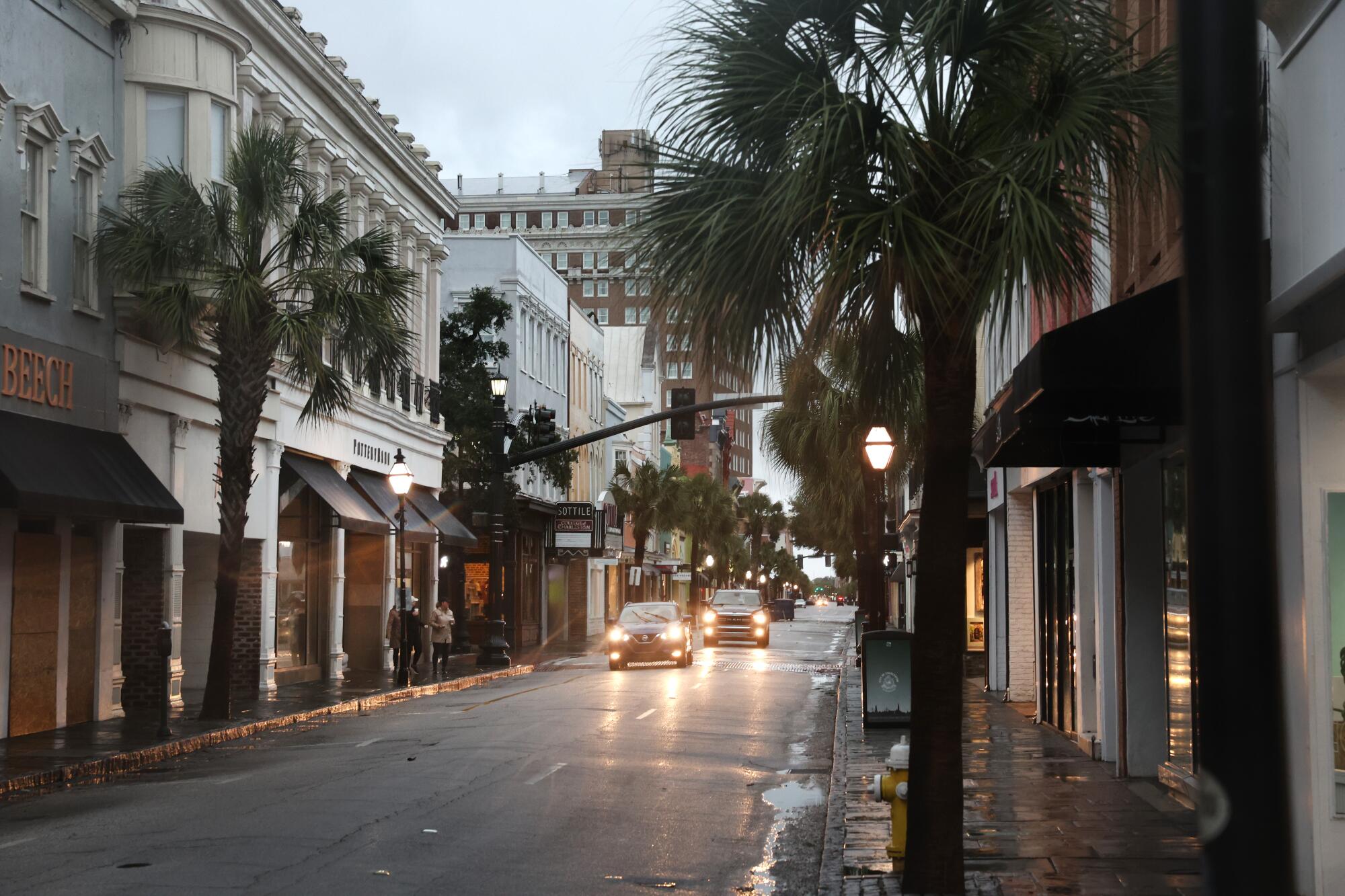
“Hurricane Ian is at our door. Expect drenching rain and sustained heavy winds over most of our state,” Cooper said. “Our message today is simple: Be smart and be safe.”
In Washington, President Biden said he was directing “every possible action be taken to save lives and get help to survivors.”
“It’s going to take months, years to rebuild,” Biden said. “I just want the people of Florida to know, we see what you’re going through and we’re with you.”
More to Read
Sign up for Essential California
The most important California stories and recommendations in your inbox every morning.
You may occasionally receive promotional content from the Los Angeles Times.
